The following is extracted from The Book of Were-Wolves, by Sabine Baring-Gould (published 1865). All spelling in the original.
English folk-lore is singularly barren of were-wolf stories, the reason being that wolves had been extirpated from England under the Anglo-Saxon kings, and therefore ceased to be objects of dread to the people. The traditional belief in were-wolfism must, however, have remained long in the popular mind, though at present it has disappeared, for the word occurs in old ballads and romances. Thus in Kempion–
O was it war-wolf in the wood?
Or was it mermaid in the sea?
Or was it man, or vile woman,
My ain true love, that mis-shaped thee?
There is also the romance of William and the Were-wolf in Hartshorn; but this professes to be a translation from the French:–
For he of Frenche this fayre tale ferst dede translate,
In ese of Englysch men in Englysch speche.
In the popular mind the cat or the hare have taken the place of the wolf for witches’ transformation, and we hear often of the hags attending the devil’s Sabbath in these forms.

In Devonshire they range the moors in the shape of black dogs, and I know a story of two such creatures appearing in an inn and nightly drinking the cider, till the publican shot a silver button over their heads, when they were instantly transformed into two ill-favoured old ladies of his acquaintance. On Heathfield, near Tavistock, the wild huntsman rides by full moon with his “wush hounds;” and a white hare which they pursued was once rescued by a goody returning from market, and discovered to be a transformed young lady.
Gervaise of Tilbury says in his Otia Imperalia—
“Vidimus frequenter in Anglia, per lunationes, homines in lupos mutari, quod hominum genus gerulfos Galli vocant, Angli vero wer-wlf, dicunt: wer enim Anglice virum sonat, wlf, lupum.” Gervaise may be right in his derivation of the name, and were-wolf may mean man-wolf, though I have elsewhere given a different derivation, and one which I suspect is truer. But Gervaise has grounds for his assertion that wér signifies man; it is so in Anglo-Saxon, vair in Gothic, vir in Latin, verr, in Icelandic, vîra, Zend, wirs, old Prussian, wirs, Lettish, vîra, Sanskrit, bîr, Bengalee.

There have been cases of cannibalism in Scotland, but no bestial transformation is hinted at in connection with them.
Thus Bœthius, in his history of Scotland, tells us of a robber and his daughter who devoured children, and Lindsay of Pitscottie gives a full account.
“About this time (1460) there was ane brigand ta’en with his haill family, who haunted a place in Angus. This mischievous man had ane execrable fashion to take all young men and children he could steal away quietly, or tak’ away without knowledge, and eat them, and the younger they were, esteemed them the mair tender and delicious. For the whilk cause and damnable abuse, he with his wife and bairns were all burnt, except ane young wench of a year old who was saved and brought to Dandee, where she was brought up and fostered; and when she came to a woman’s years, she was condemned and burnt quick for that crime. It is said that when she was coming to the place of execution, there gathered ane huge multitude of people, and specially of women, cursing her that she was so unhappy to commit so damnable deeds. To whom she turned about with an ireful countenance, saying:–‘Wherefore chide ye with me, as if I had committed ane unworthy act? Give me credence and trow me, if ye had experience of eating men and women’s flesh, ye wold think it so delicious that ye wold never forbear it again.’ So, but any sign of repentance, this unhappy traitor died in the sight of the people.”
Wyntoun also has a passage in his metrical chronicle regarding a cannibal who lived shortly before his own time, and he may easily have heard about him from surviving contemporaries. It was about the year 1340, when a large portion of Scotland had been devastated by the arms of Edward III.
About Perth thare was the countrie
Sae waste, that wonder wes to see;
For intill well-great space thereby,
Wes nother house left nor herb’ry.
Of deer thare wes then sic foison (profusion),
That they wold near come to the town,
Sae great default was near that stead,
That mony were in hunger dead.
A carle they said was near thereby,
That wold act settis (traps) commonly,
Children and women for to slay,
And swains that he might over-ta;
And ate them all that he get might;
Chwsten Cleek till name behight.
That sa’ry life continued he,
While waste but folk was the countrie.
We have only to compare these two cases with those recorded in the last two chapters, and we see at once how the popular mind in Great Britain had lost the idea of connecting change of form with cannibalism. A man guilty of the crimes committed by the Angus brigand, or the carle of Perth, would have been regarded as a were-wolf in France or Germany, and would have been tried for Lycanthropy.
If traditions of were-wolves are scanty in England, it is quite the reverse if we cross the water.

In the south of France, it is still believed that fate has destined certain men to be lycanthropists–that they are transformed into wolves at full moon. The desire to run comes upon them at night. They leave their beds, jump out of a window, and plunge into a fountain. After the bath, they come out covered with dense fur, walking on all fours, and commence a raid over fields and meadows, through woods and villages, biting all beasts and human beings that come in their way. At the approach of dawn, they return to the spring, plunge into it, lose their furry skins, and regain their deserted beds. Sometimes the loup-garou is said to appear under the form of a white dog, or to be loaded with chains; but there is probably a confusion of ideas between the were-wolf and the church-dog, bar-ghest, pad-foit, wush-hound, or by whatever name the animal supposed to haunt a churchyard is designated.
In the Périgord, the were-wolf is called louléerou. Certain men, especially bastards, are obliged at each full moon to transform themselves into these diabolic beasts.
It is always at night that the fit comes on. The lycanthropist dashes out of a window, springs into a well, and, after having struggled in the water for a few moments, rises from it, dripping, and invested with a goatskin which the devil has given him. In this condition, the louléerous run upon four legs, pass the night in ranging over the country, and in biting and devouring all the dogs they meet. At break of day they lay aside their goatskins and return home. Often they are ill in consequence of having eaten tough old hounds, and they vomit up their undigested paws. One great nuisance to them is the fact that they may be wounded or killed in their louléerou state. With the first effusion of blood their diabolic covering vanishes, and they are recognized, to the disgrace of their families.
A were-wolf may easily be detected, even when devoid of his skin; for his hands are broad, and his fingers short, and there are always some hairs in the hollow of his hand.

In Normandy, those who are doomed to be loups-garoux, clothe themselves every evening with a skin called their hère or hure, which is a loan from the devil. When they run in their transformed state, the evil one accompanies them and scourges them at the foot of every cross they pass. The only way in which a werewolf can be liberated from this cruel bondage, is by stabbing him three times in the forehead with a knife. However, some people less addicted to allopathic treatment, consider that three drops of blood drawn by a needle, will be sufficient to procure release.
According to an opinion of the vulgar in the same province, the loup-garou is sometimes a metamorphosis forced upon the body of a damned person, who, after having been tormented in his grave, has torn his way out of it. The first stage in the process consists in his devouring the cerecloth which enveloped his face; then his moans and muffled howls ring from the tomb, through the gloom of night, the earth of the grave begins to heave, and at last, with a scream, surrounded by a phosphorescent glare, and exhaling a fœtid odour, he bursts away as a wolf.
In Le Bessin, they attribute to sorcerers the power of metamorphosing certain men into beasts, but the form of a dog is that principally affected by them.
In Norway it is believed that there are persons who can assume the form of a wolf or a bear (Huse-björn), and again resume their own; this property is either imparted to them by the Trollmen, or those possessing it are themselves Trolls.
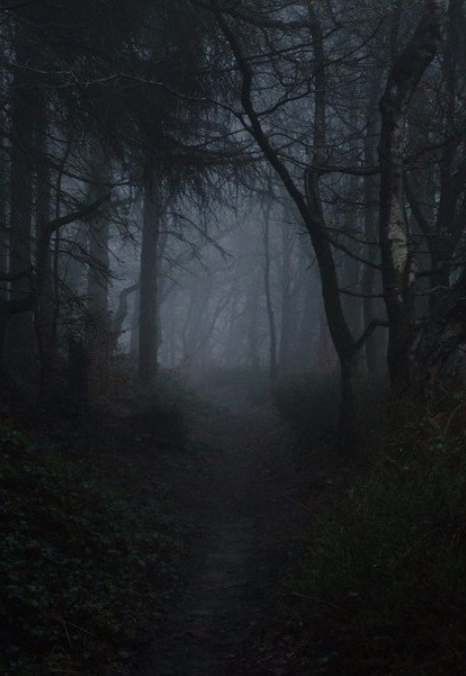
In a hamlet in the midst of a forest, there dwelt a cottager named Lasse, and his wife. One day he went out in the forest to fell a tree, but had forgot to cross himself and say his paternoster, so that some troll or wolf-witch (varga mor) obtained power over him and transformed him into a wolf. His wife mourned him for many years, but, one Christmas-eve, there came a beggar-woman, very poor and ragged, to the door, and the good woman of the house took her in, fed her well, and entreated her kindly. At her departure the beggar-woman said that the wife would probably see her husband again, as he was not dead, but was wandering in the forest as a wolf. Towards night-fall the wife went to her pantry to place in it a piece of meat for the morrow, when, on turning to go out, she perceived a wolf standing before her, raising itself with its paws on the pantry steps, regarding her with sorrowful and hungry looks. Seeing this she exclaimed, “If I were sure that thou wert my own Lasse, I would give thee a bit of meat.” At that instant the wolf-skin fell off, and her husband stood before her in the clothes he wore on the unlucky morning when she had last beheld him.
Finns, Lapps, and Russians are held in particular aversion, because the Swedes believe that they have power to change people into wild beasts. During the last year of the war with Russia, when Calmar was overrun with an unusual number of wolves, it was generally said that the Russians had transformed their Swedish prisoners into wolves, and sent them home to invest the country.
In Denmark the following stories are told:–
A man, who from his childhood had been a were-wolf, when returning one night with his wife from a merrymaking, observed that the hour was at hand when the evil usually came upon him; giving therefore the reins to his wife, he descended from the vehicle, saying to her, “If anything comes to thee, only strike at it with thine apron.” He then withdrew, but immediately after, the woman, as she was sitting in the vehicle, was attached by a were-wolf. She did as the man had enjoined her, and struck it with her apron, from which it rived a portion, and then ran away. After some time the man returned, holding in his mouth the rent portion of his wife’s apron, on seeing which, she cried out in terror,–“Good Lord, man, why, thou art a were-wolf!” “Thank thee, wife,” said he, “now I am free.” And from that time he was no more afflicted.
If a female at midnight stretches between four sticks the membrane which envelopes the foal when it is brought forth, and creeps through it, naked, she will bear children without pain; but all the boys will be were-wolves, and all the girls maras. By day the were-wolf has the human form, though he may be known by the meeting of his eyebrows above the nose. At a certain time of the night he has the form of a dog on three legs. It is only when another person tells him that he is a were-wolf, or reproaches him with being such, that a man can be freed from the ban.
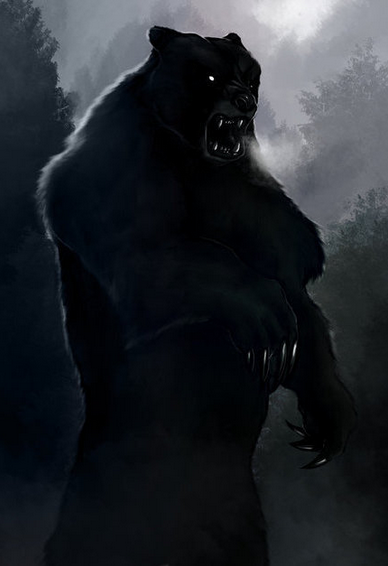
According to a Danish popular song, a hero transformed by his step-mother into a bear, fights with a knight:–
For ’tis she who bath bewitched me,
A woman false and fell,
Bound an iron girdle round me,
If thou can’st not break this belt,
Knight, I’ll thee destroy!
* * * *
The noble made the Christian sign,
The girdle snapped, the bear was changed,
And see! he was a lusty knight,
His father’s realm regained.
When an old bear in Ofodens Priestegjeld was killed, after it had caused the death of six men und sixty horses, it was found to be girded with a similar girdle.
In Schleswig and Holstein they say that if the were-wolf be thrice addressed by his baptismal name, he resumes his human form.
On a hot harvest day some reapers lay down in the field to take their noontide sleep, when one who could not sleep observed that the fellow next to him rose softly, and having girded himself with a strap, became a were-wolf.
A young man belonging to Jägerup returning late one night from Billund, was attacked, when near Jägerup, by three were-wolves, and would probably have been torn to pieces, had he not saved himself by leaping into a rye-field, for there they had no more power over him.
At Caseburg, on the isle of Usedom, a man and his wife were busy in the field making hay, when after some time the woman said to the man that she had no more peace, she could stay no longer, and went away. But she had previously desired her husband to promise, that if perchance a wild beast should come that way, he would cast his hat at it and then run away, and it would do him no injury. She had been gone but a short while, when a wolf came swimming across the Swine, and ran directly towards the haymakers. The man threw his hat at it, which the animal instantly tore to rags. But in the meantime a boy had run up with a pitchfork, and he dabbed the wolf from behind: in the same moment it became changed, and all saw that the boy had killed the man’s wife.
Formerly there were individuals in the neighbourhood of Steina, who, by putting on a certain girdle, could transform themselves into were-wolves. A man of the neighbourhood, who had such a girdle, forgot one day when going out to lock it up, as was his wont. During his absence, his little son chanced to find it; he buckled it round him., and was instantaneously turned into an animal, to all outward appearance like a bundle of peat-straw, and he rolled about like an unwieldy bear. When those who were in the room perceived this, they hastened in search of the father, who was found in time to come and unbuckle the belt, before the child had done any mischief. The boy afterwards said, that when he had put on the girdle, he was seized with such a raging hunger, that he was ready to tear in pieces and devour all that came in his way.
The girdle is supposed to be made of human skin, and to be three finger-breadths wide.
In East Friesland, it is believed, when seven girls succeed each other in one family, that among them one is of necessity a were-wolf, so that youths are slow in seeking one of seven sisters in marriage.
According to a curious Lithuanian story related by Schleicher in his Litauische Märchen, a person who is a were-wolf or bear has to remain kneeling in one spot for one hundred years before he can hope to obtain release from his bestial form.
In the Netherlands they relate the following tale:–
A man had once gone out with his bow to attend a shooting match at Rousse, but when about half way to the place, he saw on a sudden, a large wolf spring from a thicket, and rush towards a young girl, who was sitting in a meadow by the roadside watching cows. The man did not long hesitate, but quickly drawing forth an arrow, took aim, and luckily hit the wolf in the right side, so that the arrow remained sticking in the wound and the animal fled howling to the wood.
On the following day he heard that a serving-man of the burgomaster’s household lay at the point of death, in consequence of having been shot in the right side, on the preceding day. This so excited the archer’s curiosity, that he went to the wounded man, and requested to see the arrow. He recognized it immediately as one of his own. Then, having desired all present to leave the room, he persuaded the man to confess that he was a were-wolf and that he had devoured little children. On the following day he died.
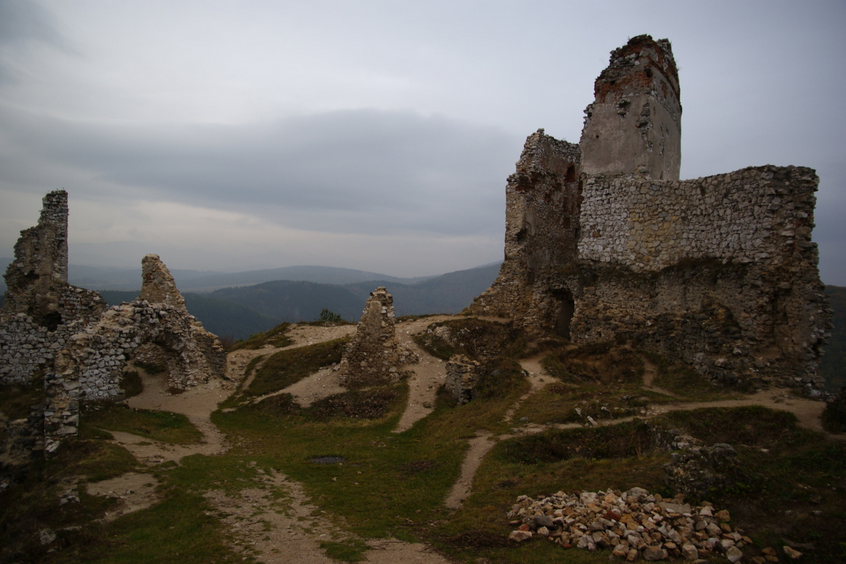
Among the Bulgarians and Slovakians the were-wolf is called vrkolak, a name resembling that given it by the modern Greeks {Greek brúkolakas}. The Greek were-wolf is closely related to the vampire. The lycanthropist falls into a cataleptic trance, during which his soul leaves his body, enters that of a wolf and ravens for blood. On the return of the soul, the body is exhausted and aches as though it had been put through violent exercise. After death lycanthropists become vampires. They are believed to frequent battlefields in wolf or hyæna shapes, and to suck the breath from dying soldiers, or to enter houses and steal the infants from their cradles. Modern Greeks call any savage-looking man, with dark complexion, and with distorted, misshapen limbs, a {Greek brúkolakas}, and suppose him to be invested with power of running in wolf-form.
The Serbs connect the vampire and the were-wolf together, and call them by one name vlkoslak. These rage chiefly in the depths of winter: they hold their annual gatherings, and at them divest themselves of their wolf-skins, which they hang on the trees around them. If any one succeeds in obtaining the skin and burning it, the vlkoslak is thenceforth disenchanted.
The power to become a were-wolf is obtained by drinking the water which settles in a foot-print left in clay by a wolf.
Among the White Russians the wawkalak is a man who has incurred the wrath of the devil, and the evil one punishes him by transforming him into a wolf and sending him among his relations, who recognize him and feed him well. He is a most amiably disposed were-wolf, for he does no mischief, and testifies his affection for his kindred by licking their hands. He cannot, however, remain long in any place, but is driven from house to house, and from hamlet to hamlet, by an irresistible passion for change of scene. This is an ugly superstition, for it sets a premium on standing well with the evil one.
The Slovakians merrily term a drunkard a vlkodlak, because, forsooth, he makes a beast of himself. A Slovakian household were-wolf tale closes this chapter.
The Poles have their were-wolves, which rage twice in the year–at Christmas and at midsummer.
According to a Polish story, if a witch lays a girdle of human skin on the threshold of a house in which a marriage is being celebrated, the bride and bridegroom, and bridesmaids and groomsmen, should they step across it, are transformed into wolves. After three years, however, the witch will cover them with skins with the hair. turned outward; immediately they will recover their natural form. On one occasion, a witch cast a skin of too scanty dimensions over the bridegroom, so that his tail was left uncovered: he resumed his human form, but retained his lupine caudal appendage {i.e. tail–jbh}.

The Russians call the were-wolf oborot, which signifies “one transformed.” The following receipt is given by them for becoming one.
“He who desires to become an oborot, let him seek in the forest a hewn-down tree; let him stab it with a small copper knife, and walk round the tree, repeating the following incantation:–
On the sea, on the ocean, on the island, on Bujan,
On the empty pasture gleams the moon, on an ashstock lying
In a green wood, in a gloomy vale.
Toward the stock wandereth a shaggy wolf.
Horned cattle seeking for his sharp white fangs;
But the wolf enters not the forest,
But the wolf dives not into the shadowy vale,
Moon, moon, gold-horned moon,
Cheek the flight of bullets, blunt the hunters’ knives,
Break the shepherds’ cudgels,
Cast wild fear upon all cattle,
On men, on all creeping things,
That they may not catch the grey wolf,
That they may not rend his warm skin
My word is binding, more binding than sleep,
More binding than the promise of a hero!
“Then he springs thrice over the tree and runs into the forest, transformed into a wolf.”
In the ancient Bohemian Lexicon of Vacerad (A. D. 1202) the were-wolf is called vilkodlak, and is explained as faunus. Safarik says under that head,-
“Incubi sepe improbi existunt mulieribus, et earum peragunt concubitum, quos demones Galli dusios nuncupant.” And in another place: “Vilkodlaci, incubi, sive invidi, ab inviando passim cum animalibus, unde et incubi dicuntur ab incubando homines, i. e. stuprando, quos Romani faunos ficarios dicunt.”
That the same belief in lycanthropy exists in Armenia is evident from the following story told by Haxthausen, in his Trans-Caucasia (Leipzig, i. 322):–
“A man once saw a wolf, which had carried off a child, dash past him. He pursued it hastily, but was unable to overtake it. At last he came upon the hands and feet of a child, and a little further on he found a cave, in which lay a wolf-skin. This he cast into a fire, and immediately a woman appeared, who howled and tried to rescue the skin from the flames. The man, however, resisted, and, as soon as the hide was consumed, the woman had vanished in the smoke.”

In India, on account of the prevalence of the doctrine of metempsychosis, the belief in transformation is widely diffused. Traces of genuine lycanthropy are abundant in all regions whither Buddism has reached. In Ceylon, in Thibet, and in China, we find it still forming a portion of the national creed.
In the Pantschatantra is a story of an enchanted Brahmin’s son, who by day was a serpent, by night a man.
Vikramâditya’s father, the son of Indra, was condemned to be an ass by day and a man by night.
A modern Indian tale is to this effect:–
A prince marries a female ape, but his brothers wed handsome princesses. At a feast given by the queen to her stepdaughters, there appears an exquisitely beautiful lady in gorgeous robes. This is none other than the she-ape, who has laid aside her skin for the occasion: the prince slips out of the room and burns the skin, so that his wife is prevented from resuming her favourite appearance.
Nathaniel Pierce gives an account of an Abyssinian superstition very similar to that prevalent in Europe.
He says that in Abyssinia the gold- and silversmiths are highly regarded, but that the ironworkers are looked upon with contempt, as an inferior grade of beings. Their kinsmen even ascribe to them the power of transforming themselves into hyænas, or other savage beasts. All convulsions and hysterical disorders are attributed to the effect of their evil eye. The Amhara call them Buda, the Tigré, Tebbib. There are also Mahomedan and Jewish Budas. It is difficult to explain the origin of this strange superstition. These Budas are distinguished from other people by wearing gold ear-rings, and Coffin declares that he has often found hyænas with these rings in their ears, even among the beasts which he has shot or speared himself. But how the rings got into their ears is more than Coffin was able to ascertain.
Beside their power to transform themselves into hyænas or other wild beasts, all sorts of other strange things are ascribed to them; and the Abyssinians are firmly persuaded that they rob the graves by midnight, and no one would venture to touch what is called quanter, or dried meat in their houses, though they would not object to partake of fresh meat, if they had seen the animal, from which it came, killed before them. Coffin relates, as eye-witness of the fact, the following story:–
Among his servants was a Buda, who, one evening, whilst it was still light, came to his master and asked leave of absence till the following morning. He obtained the required leave and departed; but scarcely had Coffin turned his head, when one of his men exclaimed,–“Look! there he is, changing himself into hyæna,” pointing in the direction taken by the Buda. Coffin turned to look, and although he did not witness the process of transformation, the young man had vanished from the spot on which he had been standing, not a hundred paces distant, and in his place was a hyæna running away. The place was a plain without either bush or tree to impede the view. Next morning the young man returned, and was charged by his companions with the transformation: this he rather acknowledged than denied, for he excused himself on the plea that it was the habit of his class. This statement of Pierce is corroborated by a note contributed by Sir Gardner Wilkinson to Rawlinson’s Herodotus (book iv. chap. 105). “A class of people in Abyssinia are believed to change themselves into hyænas when they like. On my appearing to discredit it, I was told by one who lived for years there, that no well-informed person doubted it, and that he was once walking with one of them, when he happened to look away for a moment, and on turning again towards his companion, he saw him trotting off in the shape of a hyæna. He met him afterwards in his old form. These worthies are blacksmiths.–G. W.”
A precisely similar superstition seems to have existed in America, for Joseph Acosta (Hist. Nat. des Indes) relates that the ruler of a city in Mexico, who was sent for by the predecessor of Montezuma, transformed himself, before the eyes of those who were sent to seize him, into an eagle, a tiger, and an enormous serpent. He yielded at last, and was condemned to death. No longer in his own house, he was unable to work miracles so as to save his life. The Bishop of Chiapa, a province of Guatemala, in a writing published in 1702, ascribes the same power to the Naguals, or national priests, who laboured to bring back to the religion of their ancestors, the children brought up as Christians by the government. After various ceremonies, when the child instructed advanced to embrace him, the Nagual suddenly assumed a frightful aspect, and under the form of a lion or tiger, appeared chained to the young Christian convert.–(Recueil de Voyages, tom. ii. 187.)
Among the North American Indians, the belief in transformation is very prevalent. The following story closely resembles one very prevalent all over the world.
“One Indian fixed his residence on the borders of the Great Bear lake, taking with him only a dog big with young. In due time, this dog brought forth eight pups. Whenever the Indian went out to fish, he tied up the pups, to prevent the straying of the litter. Several times, as he approached his tent, he heard noises proceeding from it, which sounded like the talking, the laughing, the crying, the wail, and the merriment of children; but, on entering it, he only perceived the pups tied up as usual. His curiosity being excited by the noises he had heard, he determined to watch and learn whence these sounds proceeded, and what they were. One day he pretended to go out to fish, but, instead of doing so, he concealed himself in a convenient place. In a short time he again heard -voices, and, rushing suddenly into the tent, beheld some beautiful children sporting and laughing, with the dog-skins lying by their side. He threw the dog-skins into the fire, and the children, retaining their proper forms, grew up, and were the ancestors of the dog-rib nation.”–(Traditions of the North American Indians, by T. A. Jones, 1830, Vol. ii. p. 18.)
In the same work is a curious story entitled The Mother of the World, which bears a close analogy to another world-wide myth: a woman marries a dog, by night the dog lays aside its skin, and appears as a man. This may be compared with the tale of Björn and Bera already given.
I shall close this chapter with a Slovakian household tale given by T. T. Hanush in the third volume of Zeitschrift für Deutsche Mythologie.
The Daughter of the Vlkolak
“There was once a father, who had nine daughters, and they were all marriageable, but the youngest was the most beautiful. The father was a were-wolf. One day it came into his head: ‘What is the good of having to support so many girls?’ so he determined to put them all out of the way.
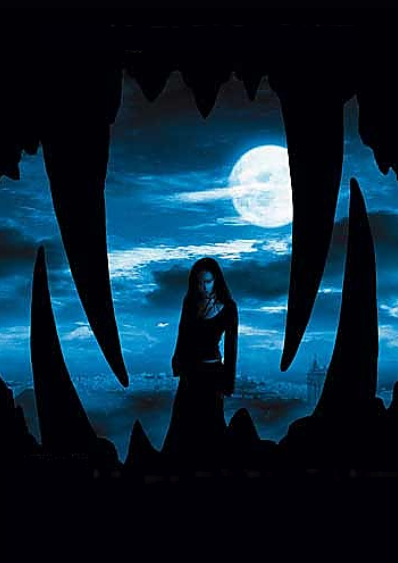
“He went accordingly into the forest to hew wood, and he ordered his daughters to let one of them bring him his dinner. It was the eldest who brought it.
“‘Why, how come you so early with the food?’ asked the woodcutter.
“‘Truly, father, I wished to strengthen you, lest you should fall upon us, if famished!’
“‘A good lass! Sit down whilst I eat.’ He ate, and whilst he ate he thought of a scheme. He rose and said: I My girl, come, and I will show you a pit I have been digging.’
“‘And what is the pit for? ‘
“‘That we may be buried in it when we die, for poor folk will not be cared for much after they are dead and gone.’
“So the girl went with him to the side of the deep pit. ‘Now hear,’ said the were-wolf, ‘you must die and be cast in there.’
“She begged for her life, but all in vain, so he laid hold of her and cast her into the grave. Then he took a great stone and flung it in upon her and crushed her head, so the poor thing breathed out her soul. When the were-wolf had done this he went back to his work, and as dusk came on, the second daughter arrived, bringing him food. He told her of the pit, and brought her to it, and cast her in, and killed her as the first. And so he dealt with all his girls up to the last. The youngest knew well that her father was a were-wolf, and she was grieved that her sisters did not return; she thought, ‘Now where can they be? Has my father kept them for companionship; or to help him in his work?’ So she made the food which she was to take him, and crept cautiously through the wood. When she came near the place where her father worked, she heard his strokes felling timber, and smelt smoke. She saw presently a large fire and two human heads roasting at it. Turning from the fire, she went in the direction of the axe-strokes, and found her father.
“See,’ said she, ‘father, I have brought you food.’
“That is a good lass,’ said he. ‘Now stack the wood for me whilst I eat.’
“‘But where are my sisters?’ she asked.
“‘Down in yon valley drawing wood,’ he replied ‘follow me, and I will bring you to them.’
“They came to the pit; then he told her that he had dug it for a grave. ‘Now,’ said he, ‘you must die, and be cast into the pit with your sisters. ‘
“‘Turn aside, father,’ she asked, ‘whilst I strip of my clothes, and then slay me if you will.’
“He turned aside as she requested, and then–tchich! she gave him a push, and he tumbled headlong into the hole he had dug for her.
“She fled for her life, for the were-wolf was not injured, and he soon would scramble out of the pit.
“Now she hears his howls resounding through the gloomy alleys of the forest, and swift as the wind she runs. She hears the tramp of his approaching feet, and the snuffle of his breath. Then she casts behind her her handkerchief. The were-wolf seizes this with teeth and nails, and rends it till it is reduced to tiny ribands. In another moment he is again in pursuit foaming at the mouth, and howling dismally, whilst his red eyes gleam like burning coals. As he gains on her, she casts behind her her gown, and bids him tear that. He seizes the gown and rives it to shreds, then again he pursues. This time she casts behind her her apron, next her petticoat, then her shift, and at last rums much in the condition in which she was born. Again the were-wolf approaches; she bounds out of the forest into a hay-field, and hides herself in the smallest heap of hay. Her father enters the field, runs howling about it in search of her, cannot find her, and begins to upset the different haycocks, all the while growling and gnashing his gleaming white fangs in his rage at her having escaped him. The foam flakes drop at every step from his mouth, and his skin is reeking with sweat. Before he has reached the smallest bundle of hay his strength leaves him, he feels exhaustion begin to creep over him, and he retires to the forest.
“The king goes out hunting every day; one of his dogs carries food to the hay-field, which has most unaccountably been neglected by the hay-makers for three days. The king, following the dog, discovers the fair damsel, not exactly ‘in the straw,’ but up to her neck in hay. She is carried, hay and all, to the palace, where she becomes his wife, making only one stipulation before becoming his bride, and that is, that no beggar shall be permitted to enter the palace.
“After some years a beggar does get in, the beggar being, of course, none other than her were-wolf father. He steals upstairs, enters the nursery, cuts the throats of the two children borne by the queen to her lord, and lays the knife under her pillow.
“In the morning, the king, supposing his wife to be the murderess, drives her from home, with the dead princes hung about her neck. A hermit comes to the rescue, and restores the babies to life. The king finds out his mistake, is reunited to the lady out of the hay, and the were-wolf is cast off a high cliff into the sea, and that is the end of him. The king, the queen, and the princes live happily, and may be living yet, for no notice of their death has appeared in the newspaper.”
This story bears some resemblance to one told by Von Hahn in his Griechische und Albanesische Märchen; I remember having heard a very similar one in the Pyrenees; but the man who flies from the were-wolf is one who, after having stripped off all his clothes, rushes into a cottage and jumps into a bed. The were-wolf dares not, or cannot, follow. The cause of his flight was also different. He was a freemason who had divulged the secret, and the were-wolf was the master of his lodge in pursuit of him. In the Bearnais story, there is nothing similar to the last part of the Slovakian tale, and in the Greek one the transformation and the pursuit are omitted, though the woman-eater is called “dog’s-head,” much as an outlaw in the north of Europe was said to be wolf-headed.
It is worthy of notice in the tale of The Daughter of the Ulkolak, that the were-wolf fit is followed by great exhaustion, and that the wolf is given clothes to tear, much as in the Danish stories already related. There does not seem to be any indication of his Laving changed his shape, at least no change is mentioned, his hands are spoken of, and he swears and curses his daughter in broad Slovakian. The fit very closely resembles that to which Skallagrim, the Icelander, was subject. It is a pity that the maid Bràk in the Icelandic tale did not fall upon her legs like the young lady in the hay.
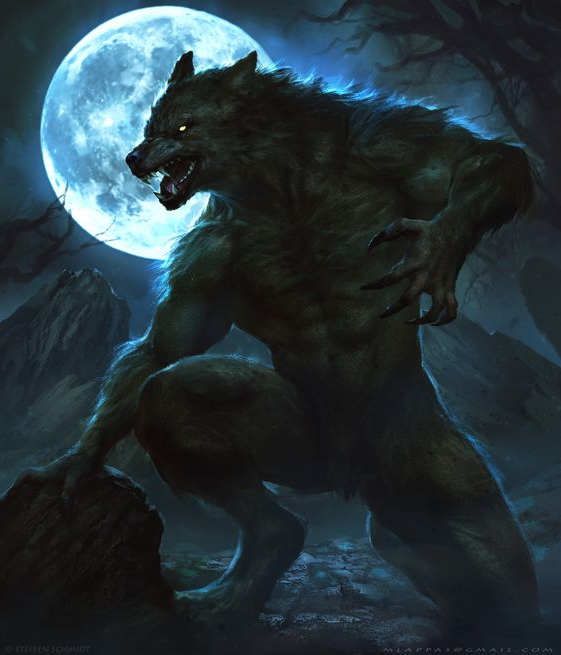



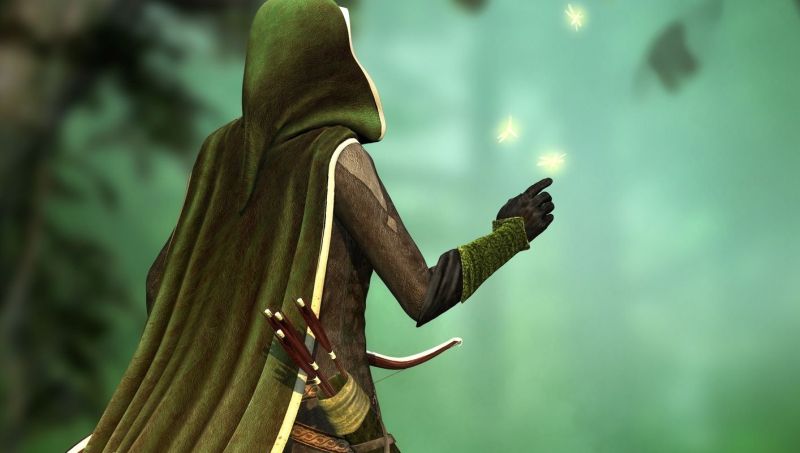



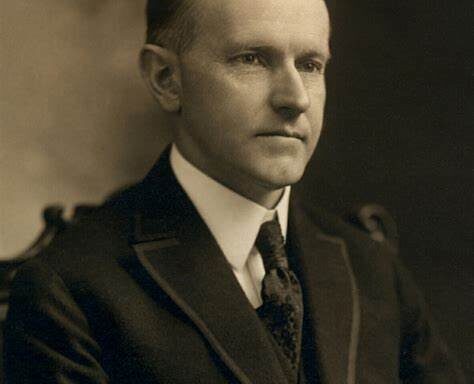

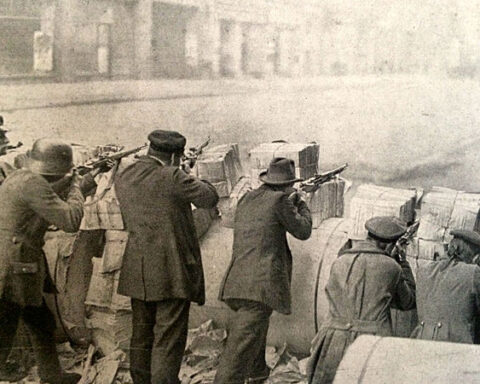
This was one of your most interesting finds in a while sir! Your tales are great, but this is of a topic we dont get much more. Ah, how the loss of folklore saddens me. Heard the one before on the seventh daughter, but that story of the daughter of the vlkolak was really, really screwed up. Well done sir.